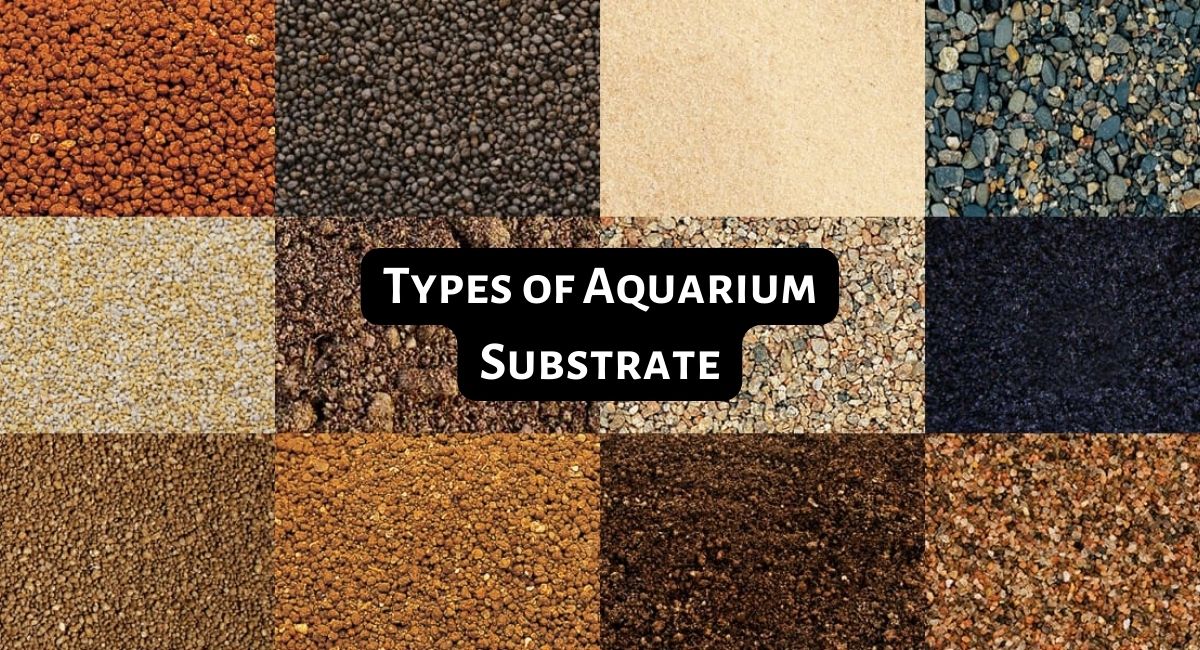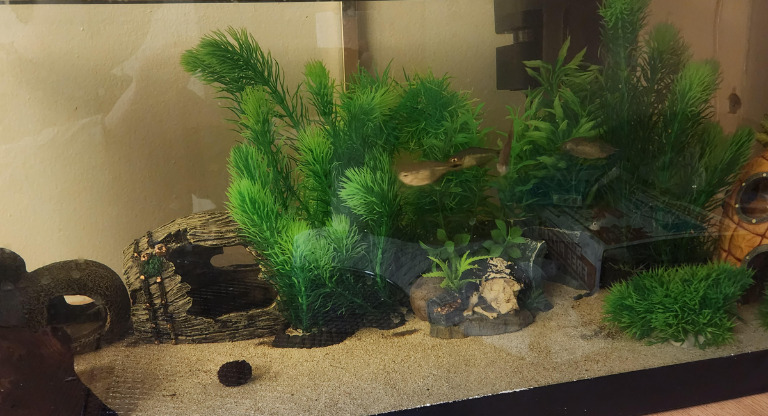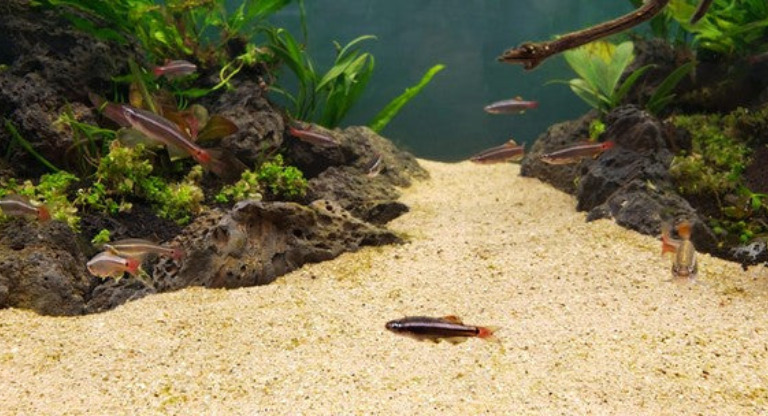Smartplantedaquarium.com participates in affiliate marketing programs. We may earn commissions on purchases made through our affiliate links. This doesn't affect our content or recommendations and we only recommend products we would put in our own tanks.
Aquarium substrate is the material placed at the bottom of an aquarium, serving as a foundation for plants, rocks, and decorations, as well as providing a surface for beneficial bacteria to colonize. Most amateur aquarists wonder, what are the different types of aquarium substrate ready for usage. There are various types of aquarium substrates available on the market, each with its own unique characteristics and benefits. Choosing the right substrate can help promote the growth of aquatic plants, support a healthy environment for fish and other aquatic animals, and enhance the overall aesthetic appeal of the aquarium.
In this blog, we will explore the different types of aquarium substrates available, their properties, and their suitability for different types of aquariums. Whether you are a beginner or an experienced aquarist, understanding the different types of substrates can help you create a thriving and beautiful aquarium.
Contents
What are the Types of Aquarium Substrate?
Aquarium substrates are a vital component of any aquarium setup. They provide a base for plants and decorations, and serve as a habitat for beneficial bacteria. With a wide variety of substrate options available on the market, choosing the right one can be overwhelming. In this short blog, we will discuss the different types of aquarium substrates, their benefits, and what to consider when choosing the best substrate for your aquarium.
What is an Aquarium Substrate For?
Aquarium substrate serves several important functions in an aquarium. Firstly, it provides a foundation for plants and decorations, helping to anchor them in place. Secondly, substrate provides a surface for beneficial bacteria to grow and colonize. These bacteria play a vital role in the nitrogen cycle, helping to break down waste products and keep the water in the aquarium clean and healthy for fish and other aquatic animals.
In addition, certain types of substrates can provide additional benefits, such as helping to maintain the pH level of the water or providing nutrients for plant growth. Overall, aquarium substrate is a crucial component of a healthy and thriving aquarium ecosystem.
Choices of Aquarium Substrates Available
There are various types of aquarium substrates available on the market, each with its own unique properties and benefits. Here are some common choices:
- Gravel: This is the most common type of aquarium substrate. It comes in various sizes and colors and is ideal for aquariums with low to medium lighting. Gravel allows for good water circulation and is easy to clean.
- Sand: Sand is a popular substrate for planted aquariums and is ideal for bottom-dwelling fish. It is available in different textures and colors and can help to anchor plants in place.
- Soil: This type of substrate is rich in nutrients and is ideal for planted aquariums. It can help to promote healthy plant growth and provides a natural look to the aquarium.
- Clay: Clay substrates are also ideal for planted aquariums. They are rich in minerals and nutrients and can help to stabilize the pH level of the water.
- Crushed coral: Crushed coral is a popular choice for marine aquariums. It helps to maintain the pH level of the water and provides a natural look to the aquarium.
- Aquatic plant substrates: These specialized substrates are designed specifically for planted aquariums. They are rich in nutrients and can help to promote healthy plant growth.
When choosing a substrate for your aquarium, consider the type of aquarium you have, the plants and fish you plan to keep, and your budget. Each type of substrate has its own unique benefits, so choose one that best suits your needs and requirements.
Can You Make Your Own Aquarium Substrate?
Yes, it is possible to make your own aquarium substrate. However, it is important to be careful when doing so, as certain materials can be harmful to aquatic life. Here are some DIY aquarium substrate options:
- Sand: You can make your own aquarium sand by washing and sterilizing regular sand from a home improvement or hardware store. It is important to use a fine-grained sand that is free of any additives or chemicals.
- Gravel: If you have access to small rocks or pebbles, you can create your own gravel substrate. Be sure to thoroughly wash and sterilize the rocks before using them in your aquarium.
- Soil: Some aquarists create their own soil-based substrates by mixing potting soil with sand or gravel. This can provide a nutrient-rich substrate for plants, but it is important to choose a soil that is free of any additives or fertilizers.
When making your own aquarium substrate, be sure to thoroughly rinse and sterilize the material before using it in your aquarium to avoid any harmful chemicals or contaminants. It is also important to research the specific needs of your aquatic plants and animals to ensure that your DIY substrate is suitable for their needs.
What Types of Substrate are Suitable for Different Types of Aquariums
The choice of substrate for different types of aquariums depends on various factors, including the specific needs of the inhabitants, the desired aesthetics, and the purpose of the aquarium. Here’s a breakdown of suitable substrates for different types of aquariums:
- Freshwater Community Aquarium: Gravel or sand substrates are commonly used in freshwater community aquariums. They come in various sizes and colors, allowing for customization and creating a natural appearance. These substrates provide stability for plants, support beneficial bacteria, and allow for easy maintenance.
- Planted Aquarium: Planted aquariums benefit from nutrient-rich substrates designed specifically for plant growth. These substrates are usually composed of nutrient-enriched clay, peat, or soil blends. They provide essential nutrients, promote healthy root development, and enhance plant growth. Examples include specialized planted substrates, soil-based substrates, or nutrient-enriched gravel.
- Marine Reef Aquarium: Marine reef aquariums often utilize aragonite-based substrates, such as crushed coral or live sand. These substrates contribute to the maintenance of stable water chemistry and aid in buffering pH and alkalinity. Live sand can also introduce beneficial organisms that assist in the natural filtration process.
- Brackish Water Aquarium: Brackish water setups benefit from substrates that mimic the estuarine or mangrove environments. A mix of sand and crushed coral is commonly used to create the appropriate brackish water conditions. These substrates provide a natural appearance and support the specific needs of brackish water species.
- Biotope Aquarium: Biotope aquariums aim to replicate specific natural habitats. The choice of substrate depends on the targeted biotope. For example, a riverbed or stream biotope may use fine sand or gravel, while a rocky shoreline biotope may utilize coarse gravel or rocky substrates. Researching the natural habitat of the selected biotope is crucial for selecting the most appropriate substrate.
- Specialty Aquascapes: Specialty aquascapes, such as Dutch-style or Iwagumi layouts, often involve specific substrates to achieve the desired visual effects. These substrates may include fine-grained sands, carpeting substrates, or even ADA Aquasoil, which is a nutrient-rich substrate specifically designed for aquascaping.
It’s important to consider the specific requirements of the aquarium’s inhabitants, the desired aesthetic outcome, and the functionality of the chosen substrate when making a selection. Additionally, monitoring water parameters and adjusting substrate composition as needed are important for maintaining a healthy and thriving aquarium.
Frequently Asked Questions (FAQs)
Which substrate is best for aquarium?
The best substrate for an aquarium depends on the specific needs of the aquatic plants and animals in the aquarium. Factors such as pH level, nutrient requirements, and grain size should be considered when selecting a substrate. Some popular options include sand, gravel, specialized plant substrates, and soil. It is important to research the needs of your aquarium inhabitants and choose a substrate that is suitable for them.
What kind of substrate for planted aquarium?
The best substrate for a planted aquarium is one that provides nutrients for plant growth and supports root development. Specialized plant substrates are a popular choice, as they contain a blend of nutrients and minerals that promote plant growth. These substrates may also contain beneficial bacteria to support a healthy aquarium environment. Other options include soil substrates and fine-grain sand, which can also provide a suitable base for plant growth.
What is the lowest maintenance aquarium substrate?
The lowest maintenance aquarium substrate is generally considered to be fine-grained sand or gravel, as these substrates do not require frequent cleaning or maintenance. They are also less likely to trap debris and waste, making them a good choice for beginners or for aquariums with low-maintenance requirements. Additionally, specialized plant substrates may require more maintenance as they contain nutrients and minerals that can deplete over time and may need to be replenished periodically. Ultimately, the level of maintenance required for an aquarium substrate will depend on the specific needs of the aquarium inhabitants and the overall ecosystem.
What is the best nutrient rich substrate?
The best nutrient-rich substrate for an aquarium depends on the specific needs of the plants and animals in the aquarium. Generally, specialized plant substrates are a good choice for providing nutrients for plant growth, as they contain a blend of minerals and nutrients specifically designed to support plant growth. Some popular options include substrates containing iron, potassium, and other trace minerals. Soil substrates may also provide a nutrient-rich base for plant growth. However, it is important to research the specific needs of your aquarium inhabitants and choose a substrate that is suitable for their needs.
Conclusion
In conclusion, choosing the right type of aquarium substrate is a crucial aspect of creating a healthy and visually appealing aquarium. Each type of substrate has its own unique properties and benefits, so it is important to select one that suits your aquarium’s specific needs and requirements. Whether you opt for sand, gravel, or specialized substrates such as soil or clay, a suitable substrate will help promote the growth of aquatic plants, support a healthy environment for fish and other aquatic animals, and enhance the overall appearance of your aquarium.
By considering the factors discussed in this blog, you can make an informed decision and select the best substrate for your aquarium. With the right substrate in place, you can create a thriving underwater world that you and your fish will enjoy for years to come.






